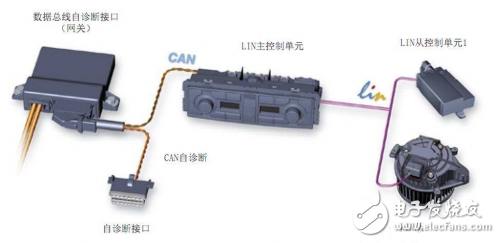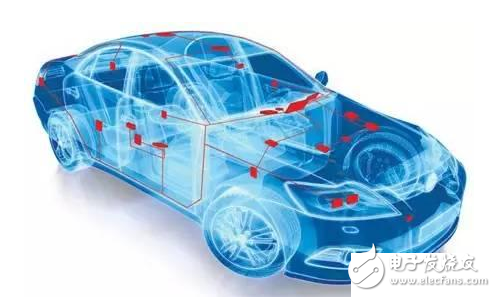The LIN bus is a low-cost serial communication network defined for automotive distributed electronic systems. It is a supplement to other automotive multi-channel networks such as Controller Area Network (CAN), which is suitable for bandwidth and performance of the network. Or fault-tolerant features are not too demanding applications. The LIN bus is based on the SCI (UART) data format and uses a single master/multi-slave mode, which is a special case in the UART. LIN bus working principle The control units controlled by the LIN bus are generally distributed in a relatively close space, and the transmission data is a single line, and the data line can be up to 40 m. A 1kΩ resistor is connected to the 12V power supply in the master node, and a 30kΩ resistor is connected to the 12V power supply from the node. Each node supplies power to the bus through the battery positive termination resistor, and each node can pull down the bus voltage through the internal transmitter. Main control unit The LIN main control unit is connected to the CAN data bus, monitors the data transmission process and data transmission rate, sends the message header, determines when and how to send information to the LIN data bus, and the LIN control unit and CAN in the LIN data bus system. The bus acts directly as a "translation" and enables self-diagnosis of the LIN master control unit and the LIN slave control unit connected to it. Information structure of the main control unit The LIN main control unit controls the beginning of each piece of information on the bus conductor to send a message header through the LIN bus master unit, which consists of a synchronous phase, the latter part is the identifier byte, which can transmit 2, 4, 8 Byte of data. The identifier is used to determine if the master unit will transfer data to the slave control unit. The information segment contains information that is sent to the slave control unit. The check zone provides good security for data transmission. The check area is composed of data bytes by the main control unit and is located at the end of the information. The LIN bus master control unit transmits the current information in a round-robin fashion. LIN slave control unit In the LIN data bus system, the communication of the LIN slave control unit is completely controlled by the LIN master control unit. Only when the LIN master control unit issues a command, the LIN slave control unit can transmit data via the LIN bus. A single control unit, sensor, and actuator are equivalent to the LIN slave control unit. The sensor is a signal input device. The sensor is integrated with an electronic control device that analyzes the measured value. The analyzed value is used as a digital signal through the LIN bus. For transmission. Some sensors or actuators use only one pin on the LIN main control unit socket to enable information transfer, that is, single-wire transmission. LIN actuators are intelligent electronic or electromechanical components that receive tasks via the LIN digital control unit of the LIN master control unit. The LIN main control unit obtains the actual working state of the actuator through the integrated sensor, and then compares the specified state with the actual state and issues corresponding control commands. After the LIN main control unit issues a control command, the sensor and actuator can react. The LIN slave control unit waits for instructions from the master control unit and communicates with the master control unit as needed. If the sleep mode is to be terminated, the LIN slave control unit can send a wake-up signal by itself. The LIN master control unit is installed on the LIN bus system device. TNC Cable Mount Connectors,TNC Bulkhead Mount Connectors,TNC Flange Mount Connectors,TNC PCB Mount Connectors Xi'an KNT Scien-tech Co., Ltd , https://www.honorconnector.com

